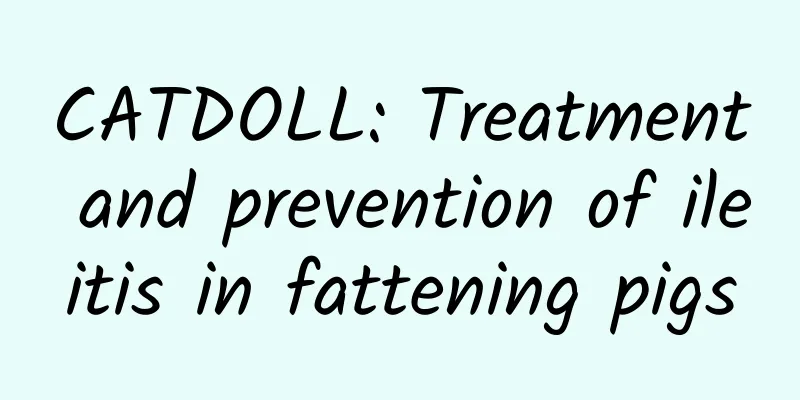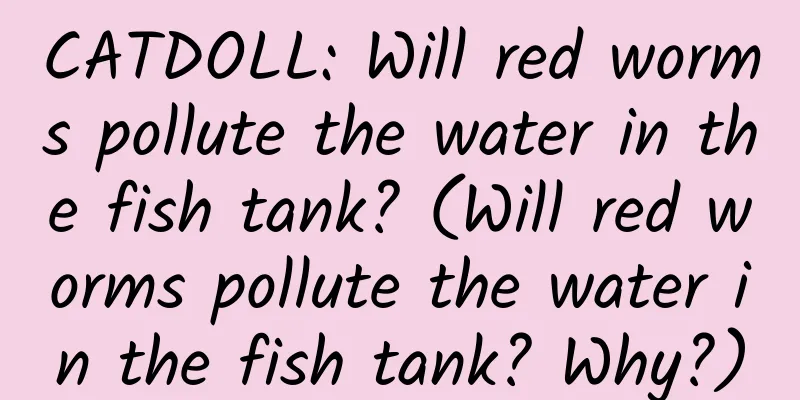CATDOLL : CATDOLL: What medicine can be used to kill maggots in oyster mushroom bags?

|
During its life activities, Oyster mushrooms are often harmed and eaten by some pests, such as maggots. If measures are not taken in time, the yield of Oyster mushrooms will be seriously affected. Today we are going to talk about how to eliminate the maggots of Oyster mushroom. What are fungus maggots? Fungus maggots are a general term for the larvae of fungus flies, fungus mosquitoes, etc. There are two types in total. One is milky white, also known as white maggots. The affected parts of the mycelium rot and turn black, and they devour the fruiting bodies at the same time, causing the affected mushroom buds and young mushrooms to die in batches. The other is red maggots, which are orange-red in color. They generally do not devour the mycelium and mushroom bodies. When the temperature is below 8 degrees, their activity decreases, but they gather on the mushroom roots in large numbers, which will seriously affect the sales of Oyster mushrooms. Infection route ⑴ The mushroom shed is old and has been planted for many years. The mushrooms have not been treated with insecticides before being put into bags; (2) Close to granaries and livestock sheds, which are very likely to attract pests; ⑶ Spread of bacteria, which contain a large number of pests; ⑷ Raw materials are infested with pests. Raw materials are more or less infested with pests. Old materials or raw materials that have been damp and agglomerated are more likely to have more pests. ⑸ There are many pollution bags in the shed, and the smell of the pollution bags will attract various flying insects and pests to feed and lay eggs. Prevention and control measures 1. Prevention: Before starting production, the mushroom farm must be thoroughly disinfected and pest-killing must be carried out to eliminate above-ground or underground breeding grounds for pests and cut off the source of pests. (II) Measures: ⑴Remove aging mycelium; (2) Using the phototaxis of adult insects, set up insecticidal lamps for trapping and killing; ⑶ Spray high-efficiency and low-toxic pesticides in the remaining holes to kill larvae and eggs. Note: If you use highly effective and toxic pesticides (especially concentrations below 2000 times), be sure to use them when there are no mushrooms. There are maggots in the mushroom capsules of Oyster mushrooms. They are the larvae of mushroom flies and mushroom mosquitoes. They will feed on mycelium and fruiting bodies. They can be killed by spraying 2,000 times of pyrethroids. 1. Name of pest The scientific name of this pest is Fungus Gall Midge. In insect classification, it belongs to Diptera and Gall Midge family. We usually call it small red worms or small red maggots. It is common on edible fungi such as mushrooms, white fungus, and black fungus. In recent years, it has occurred in large numbers on mushrooms. There are two types of gall midges: larval reproductive gall midges and non-larval reproductive gall midges. The first type is the larval reproductive gall midge that we often see in production.  There are two types of larval reproductive gall midges. One is the heteropod gall midge, which has white larvae and is 1-3 mm long. The second type is the bacteriophagous gall midge, which has orange larvae. The fungus gall midge introduced below is mainly based on the second type of bacteriophagous gall midge.  2. Hazards The main harm time of fungus gall midges is the low temperature period in autumn, winter and spring. The larvae can feed on the hyphae and fruiting bodies of various edible fungi. The larvae of gall midges appear in the delicate gills, which seriously affects the commercial value of the fruiting bodies. When the insect density is high, larvae can be seen in groups on the ground and on the bed. When the temperature is low, they can drill into the shallow cortex of the fruiting body flesh and eat. The larvae of fungus gall midges can also carry miscellaneous bacteria, causing bacterial and fungal diseases in some fruiting bodies. 3. Living habits 1. There are two modes of reproduction: larval reproduction and sexual reproduction. The rapid increase in the number of gall midges often relies on larval reproduction. After each gall midge larva is born, it has immature eggs in its body. As the larva grows, the eggs in the body also mature and develop into small larvae in the larvae. The small larvae feed on the tissues of the mother larvae, and then bite through the body wall of the mother larvae to drill out. At 20-25℃, it takes about 4-6 days for one larva to produce about 20 small larvae. Because it does not go through several normal stages of reproduction (egg, larva, pupa, and adult), this method of reproduction can lead to a sharp increase in the number of insects, which often catches us off guard. In 2010, Caifeng from the Mushroom Garden saw a mushroom shed that was seriously damaged by red worms. On the walkway between the two rows of mushroom sticks, there was a thick layer of red worms. It was disgusting to grab a handful. Of course, the oyster mushrooms in this mushroom shed were completely extinct.  2. The larvae and adults are phototactic. In bright places, the density of insects is higher. Based on this habit, we can use insecticidal lamps to kill the adults of gall midges during prevention and control; 3. Gall midge larvae prefer humid environments and can survive for many days in water. They are not adapted to dry environments. Under dry conditions, the larvae have difficulty moving and often form dense orange-red masses to protect their own survival. When the environment is suitable, they can continue to grow and reproduce. 4. When the temperature is below 7℃, the larvae stop feeding and asexual reproduction, and can overwinter as larvae; when the temperature is above 37℃ and the relative humidity is below 65%, the larvae will gather together and stop feeding, and the mature larvae will pupate, while the larvae that fail to pupate will die. From the current degree of damage, the damage of gall midges is mainly in the autumn mushroom stage, usually in October, November and December. After the temperature drops in winter, the damage will naturally decrease.  IV. Prevention and control measures 1. Physical control: Use the phototaxis of adult insects. You can use insecticidal lamps, electronic mosquito killers, black light lamps, etc. to lure and kill adult insects. At the same time, you can use yellow sticky insect boards to lure and kill adult insects. 2. Cleaning the mushroom shed Before the mushroom sticks enter the shed, the mushroom shed must be disinfected with insecticides. You can use sprays such as high-efficiency cypermethrin, anti-mushroom insecticide, and insecticide-carb to kill insects; use high-efficiency cypermethrin smoke to fumigate the mushroom shed; after the mushrooms are grown, the waste mushroom sticks must be transferred to the mushroom shed as soon as possible to prevent the larvae of gall midges from existing in the mushroom shed for a long time; the area around the mushroom shed must be kept clean and hygienic, and waste mushroom sticks must not be randomly piled up around the mushroom shed and the mushroom-growing shed; 3. Prevent fungi from being infected with pests. Caifeng Mushroom Garden found in its investigation that many oyster mushroom sticks were quickly infected with gall midge larvae, most of which were caused by insects in the cultivated varieties. Therefore, during the fungus development process of the cultivated varieties, insect prevention work should be done well. When sowing, careful inspection should be carried out. As long as fungi infected with red worms are found, they should be discarded; 4. During the period of mixing and fermentation, it is necessary to strictly prevent the raw materials and fermented materials from being mixed with mushroom insects and high-efficiency cypermethrin when sowing. The amount should not be too large. For cooked materials, mushroom insects and other high-temperature resistant agents can be added to the materials. During the period of fermentation, the mushroom shed should be kept dark as much as possible, and it is best to install insect-proof nets to prevent insects. If necessary, safe, high-efficiency and low-toxic agents such as mushroom insects and high-efficiency cypermethrin can be sprayed every other week during the period of fermentation to prevent the spread and reproduction of adults and larvae. Insect-proof agents produced by many domestic edible fungi agent manufacturers can also be used, which will not be introduced here one by one. 5. Killing gall midge larvae during the period of spawning If the red worms in the mushroom sticks reproduce seriously during the period of spawning, you can consider using aluminum phosphide fumigation to eliminate them. You can use aluminum phosphide tablets, generally about 3 grams per tablet, and use 3 tablets for each cubic space. When the temperature is 25℃, the fumigation time is preferably 24-48 hours. A long time can kill the insects thoroughly, but it will harm the mycelium. The phosphine produced by the decomposition of aluminum phosphide is highly toxic, so you must pay attention to personal safety when using it. After using aluminum phosphide to kill insects in the mushroom shed, the mushroom shed must be fully ventilated to disperse the poison and ensure that the toxic gas is fully dispersed before entering the management. If there are a few pests infesting the mushroom bags, and the mushrooms are basically grown, you can use a syringe to inject some of the safe and efficient pesticides introduced above. Here I want to explain that no matter how to kill insects, you should resolutely avoid spraying pesticides on the fruiting bodies, and spraying on the mushroom production sites should be prohibited within 7 days before picking mushrooms!!! 6. If gall midge larvae appear around November, if the situation is not very serious, you can combine low temperature prevention and control to keep the temperature in the mushroom shed no higher than 15℃ during the day and the lowest temperature at night can be maintained above 3-4℃. The mushrooms can grow normally and the gall midge larvae will basically not cause any harm, because the larvae are basically no longer very active below 10℃. poison. |
<<: CATDOLL: What conditions are needed to breed red worms?
>>: CATDOLL: How to use mushroom sticks
Recommend
CATDOLL: What wild bees are there in Chongqing Yuxi?
1. What wild bees are there in Chongqing Yuxi? Yo...
Signs before a cat gives birth to its first litter
Restlessness: Cats may become restless before giv...
CATDOLL: Fengchao Express sent me a message asking me to pick up the package at the express locker, but the destination is more than ten miles away from me... What's going on?
If no one sends you a courier, it may be that the...
CATDOLL: How to make an ant farm (How to make an ant farm)
1. Homemade Ant Eco-Box? Get two glass jars with ...
CATDOLL: Why is silver carp much more expensive than bighead carp?
1. Why is silver carp much more expensive than bi...
CATDOLL: What do you need to keep snails alive? (Video on What do you need to keep snails alive?)
1. How to raise snails? What do snails eat? 1. Yo...
CATDOLL: Which fish is the most profitable to raise in fish ponds in the north? What is the most profitable to raise in fish ponds?
When it comes to what fish is the most profitable...
CATDOLL: Look at this loach, it's over two meters long and weighs more than 70 kilograms. How many years does it take to grow this big?
1. Look at this loach, it is over two meters long...
Building a comfortable and livable three-dimensional pig house- Construction Guide
introduction With the development of animal husba...
CATDOLL: When can I raise silkworms (When can I raise silkworm babies)
1. Which month is it best to raise silkworms? Mar...
CATDOLL: How to Breed Hairy Crabs
How to Breed Hairy Crabs As the market demand for...
What happens if a cat eats cockroach medicine?
Cats may be poisoned if they eat cockroach medici...
CATDOLL: Does anyone know how to breed earthworms, also known as lid worms?
1. Who knows how to breed earthworms, also known ...
CATDOLL: Why do groupers from the stream that are raised in the well die so often?
Why do groupers from the stream that are kept in ...
CATDOLL: What are the methods and tools for collecting ants?
1. What are the methods and tools for collecting ...









